The cost of Prostatectomy in United Arab Emirates ranges from AED 41104 to 64518 (USD 11200 to USD 17580)
Prostatectomy is the operation performed to remove the prostate gland along with its surrounding tissues.
This generally involves the seminal vesicles plus some surrounding lymph nodes. The goal of this treatment is to treat prostate cancer but that is possible only if cancer has not spread further than the prostate.
During Prostatectomy, the extracted prostate observed with a microscope to check whether prostate cancer reached the prostate’s edge or not. If it has reached the edges then it has probably spread further as well, and so additional treatments are required in this case.
Prostatectomy treatment is an ideal resolution for men below the age of 75 plus who have a life expectancy of at least a decade or more. These people can get the most out of the Prostatectomy.
At first, the risk of cancer’s spread is confirmed with the help of the results of the PSA level and the biopsy report. For more detailed testing, CT scans, MRI scans, bone scans, and ultrasound can be performed.
If the test reveals that cancer has not spread further than the surgeon might recommend other treatment options which include hormone therapy or radiation therapy, etc.
Similar to the cost of other surgical treatments for cancer, the prostatectomy cost also varies from patient to patient depending on the severity and spread of cancer.
Hence there is an estimated range for the cost which is from $10,100 to $135,000 in the United States.
| City | Minimum Cost | Maximum Cost |
|---|---|---|
| Dubai | USD 11050 | USD 12550 |
| Abu Dhabi | USD 11150 | USD 12010 |
| Sharjah | USD 11290 | USD 12550 |
| Ajman | USD 11200 | USD 12910 |
| Country | Cost | Local_currency |
|---|---|---|
| Czechia | USD 14500 | Czechia 329005 |
| Greece | USD 11300 | Greece 10396 |
| India | USD 5000 | India 415750 |
| Israel | USD 10000 | Israel 38000 |
| Lithuania | USD 4500 | Lithuania 4140 |
| Malaysia | USD 7000 | Malaysia 32970 |
| South Korea | USD 16000 | South Korea 21483040 |
| Spain | USD 14800 | Spain 13616 |
| Thailand | USD 11140 | Thailand 397141 |
| Tunisia | USD 6850 | Tunisia 21304 |
| Turkey | USD 7020 | Turkey 211583 |
| United Arab Emirates | USD 11200 | United Arab Emirates 41104 |
| United Kingdom | USD 12000 | United Kingdom 9480 |
Treatment cost

Types of Prostatectomy in Iranian Hospital and its associated cost
| Treatment Option | Approximate Cost Range (USD) | Approximate Cost Range (AED) |
|---|---|---|
| Prostatectomy (Overall) | 8920 - 17725 | 32847 - 67191 |
| Radical Prostatectomy | 7702 - 15555 | 28875 - 57854 |
| Laparoscopic Prostatectomy | 9688 - 16952 | 34987 - 62314 |
| Robotic Prostatectomy | 10097 - 17786 | 37938 - 66099 |
| Open Prostatectomy | 8615 - 15601 | 31063 - 56682 |
DOCTORS IN 11 SPECIALITIES
FACILITIES & AMENITIES
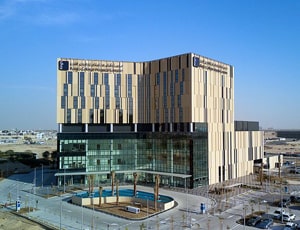
Types of Prostatectomy in Kings College Hospital Dubai and its associated cost
| Treatment Option | Approximate Cost Range (USD) | Approximate Cost Range (AED) |
|---|---|---|
| Prostatectomy (Overall) | 9046 - 18219 | 33386 - 67293 |
| Radical Prostatectomy | 8007 - 16060 | 28767 - 56964 |
| Laparoscopic Prostatectomy | 9357 - 16807 | 35259 - 61174 |
| Robotic Prostatectomy | 9933 - 18159 | 37334 - 65103 |
| Open Prostatectomy | 8412 - 15844 | 31106 - 56530 |
DOCTORS IN 11 SPECIALITIES
FACILITIES & AMENITIES
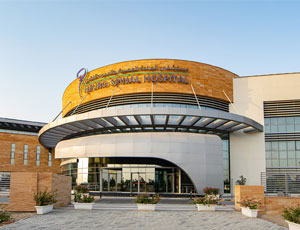
The Neuro Spinal Hospital is located in Dubai Science Park in Dubai. It is a pioneer in bringing the latest Technology, Medicine, and Education to heal and serve the community. It has been approved and accredited by the Dubai Health Authority and has the Government of Dubai and Dubai Health Experience as its partners.
It has a 114-bed capacity, green spaces for the rehabilitation of the patients, and smart patient rooms, and is four times that of its former premises in terms of capacity. It is also the first hospital to have surgical robots in UAE. The Continous Medical Education (CME) program was introduced in 2007 by the hospital that has become a mandatory requirement for all healthcare professionals. Practitioners need to provide that they have attended enough CME hours to be promoted to a higher level or renew their licenses.
The hospital consists of multinational staff who are dedicated to working together for solving problems with the patients and their families, to provide the highest level of support and care through advanced and progressive technologies, and an evidence approach to medicine, all delivered in a collaborative and compassionate environment. The team believes in safety, quality, dignity, engagement, and collaboration in providing premium healthcare to the patient. It consists of specialized units such as spinal and back pain units, joint replacement centers, sports medicine, orthopedics, oncology, neurology, physiotherapy, etc.

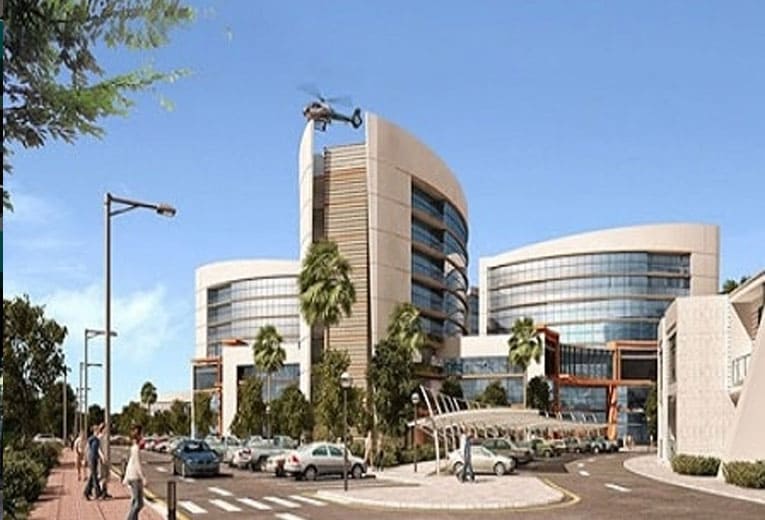
Types of Prostatectomy in Burjeel Medical City and its associated cost
| Treatment Option | Approximate Cost Range (USD) | Approximate Cost Range (AED) |
|---|---|---|
| Prostatectomy (Overall) | 9076 - 18337 | 33515 - 66513 |
| Radical Prostatectomy | 8026 - 15532 | 29364 - 57163 |
| Laparoscopic Prostatectomy | 9481 - 16944 | 35630 - 61999 |
| Robotic Prostatectomy | 10136 - 17660 | 36575 - 66769 |
| Open Prostatectomy | 8601 - 15806 | 30810 - 58410 |
DOCTORS IN 13 SPECIALITIES
FACILITIES & AMENITIES
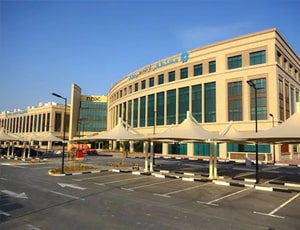
Types of Prostatectomy in NMC Royal Hospital, Khalifa City and its associated cost
| Treatment Option | Approximate Cost Range (USD) | Approximate Cost Range (AED) |
|---|---|---|
| Prostatectomy (Overall) | 9186 - 17789 | 33578 - 65113 |
| Radical Prostatectomy | 8006 - 16083 | 29222 - 58759 |
| Laparoscopic Prostatectomy | 9435 - 16749 | 35820 - 60719 |
| Robotic Prostatectomy | 10199 - 17730 | 36509 - 65311 |
| Open Prostatectomy | 8603 - 16062 | 31267 - 57630 |
DOCTORS IN 11 SPECIALITIES
FACILITIES & AMENITIES
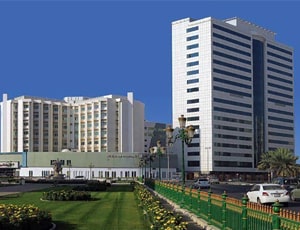
Types of Prostatectomy in NMC Royal Hospital Sharjah and its associated cost
| Treatment Option | Approximate Cost Range (USD) | Approximate Cost Range (AED) |
|---|---|---|
| Prostatectomy (Overall) | 8925 - 18259 | 32938 - 66448 |
| Radical Prostatectomy | 7936 - 15956 | 28384 - 57003 |
| Laparoscopic Prostatectomy | 9623 - 16867 | 35456 - 61696 |
| Robotic Prostatectomy | 10156 - 17952 | 36596 - 65486 |
| Open Prostatectomy | 8378 - 15846 | 30861 - 58829 |
DOCTORS IN 11 SPECIALITIES
FACILITIES & AMENITIES
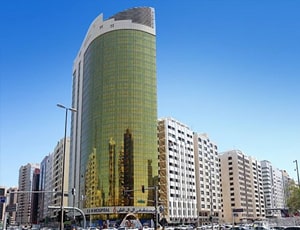
Types of Prostatectomy in LLH Hospital, Abu Dhabi and its associated cost
| Treatment Option | Approximate Cost Range (USD) | Approximate Cost Range (AED) |
|---|---|---|
| Prostatectomy (Overall) | 8976 - 17890 | 33023 - 66889 |
| Radical Prostatectomy | 8039 - 15478 | 29129 - 57829 |
| Laparoscopic Prostatectomy | 9612 - 16847 | 34410 - 61795 |
| Robotic Prostatectomy | 10340 - 18350 | 37351 - 64861 |
| Open Prostatectomy | 8607 - 15875 | 30762 - 58858 |
DOCTORS IN 10 SPECIALITIES
FACILITIES & AMENITIES
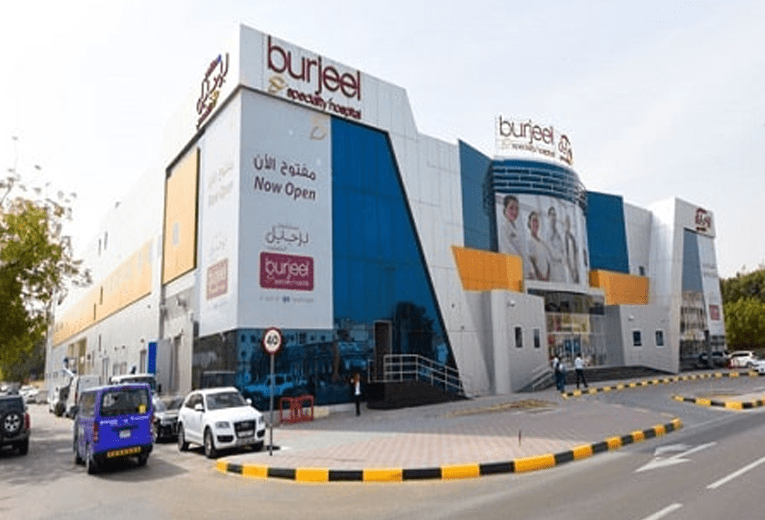
Types of Prostatectomy in Burjeel Specialty Hospital, Sharjah and its associated cost
| Treatment Option | Approximate Cost Range (USD) | Approximate Cost Range (AED) |
|---|---|---|
| Prostatectomy (Overall) | 9049 - 18194 | 33271 - 66940 |
| Radical Prostatectomy | 7917 - 15604 | 28590 - 57503 |
| Laparoscopic Prostatectomy | 9443 - 16739 | 34715 - 61619 |
| Robotic Prostatectomy | 10198 - 17918 | 37246 - 65352 |
| Open Prostatectomy | 8417 - 16076 | 30754 - 57494 |
SPECIALITIES
FACILITIES & AMENITIES
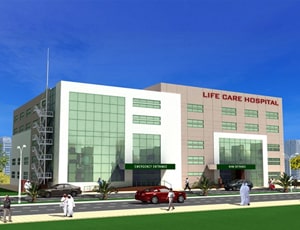
Types of Prostatectomy in Lifecare Hospital, Musaffah and its associated cost
| Treatment Option | Approximate Cost Range (USD) | Approximate Cost Range (AED) |
|---|---|---|
| Prostatectomy (Overall) | 9022 - 18161 | 32757 - 67092 |
| Radical Prostatectomy | 7972 - 15997 | 29412 - 58156 |
| Laparoscopic Prostatectomy | 9505 - 16874 | 35690 - 62439 |
| Robotic Prostatectomy | 10331 - 17843 | 36683 - 67340 |
| Open Prostatectomy | 8424 - 16036 | 30510 - 58771 |
DOCTORS IN 9 SPECIALITIES
FACILITIES & AMENITIES

Types of Prostatectomy in Thumbay University Hospital, Ajman and its associated cost
| Treatment Option | Approximate Cost Range (USD) | Approximate Cost Range (AED) |
|---|---|---|
| Prostatectomy (Overall) | 8971 - 17640 | 32377 - 66313 |
| Radical Prostatectomy | 7989 - 15646 | 29424 - 57229 |
| Laparoscopic Prostatectomy | 9635 - 17131 | 35430 - 61508 |
| Robotic Prostatectomy | 9963 - 18356 | 37598 - 67065 |
| Open Prostatectomy | 8444 - 15803 | 30656 - 58672 |
DOCTORS IN 14 SPECIALITIES
FACILITIES & AMENITIES
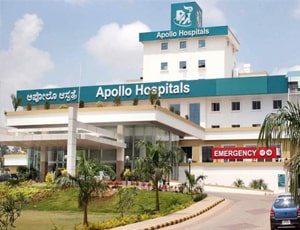
Types of Prostatectomy in Apollo Hospitals Bannerghatta and its associated cost
| Treatment Option | Approximate Cost Range (USD) | Approximate Cost Range (INR) |
|---|---|---|
| Prostatectomy (Overall) | 3441 - 8899 | 275049 - 728715 |
| Radical Prostatectomy | 3387 - 7877 | 271727 - 650050 |
| Laparoscopic Prostatectomy | 5717 - 8971 | 460923 - 753476 |
| Robotic Prostatectomy | 6740 - 9117 | 547610 - 725483 |
| Open Prostatectomy | 4448 - 7894 | 363965 - 633032 |
DOCTORS IN 13 SPECIALITIES
FACILITIES & AMENITIES
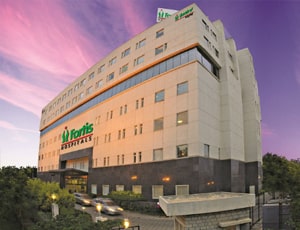
Types of Prostatectomy in Fortis Hospital and its associated cost
| Treatment Option | Approximate Cost Range (USD) | Approximate Cost Range (INR) |
|---|---|---|
| Prostatectomy (Overall) | 3050 - 8084 | 248849 - 664403 |
| Radical Prostatectomy | 3048 - 7115 | 249231 - 585299 |
| Laparoscopic Prostatectomy | 5088 - 8131 | 416483 - 668013 |
| Robotic Prostatectomy | 6072 - 8126 | 500373 - 666429 |
| Open Prostatectomy | 4041 - 7131 | 334160 - 579752 |
DOCTORS IN 12 SPECIALITIES
FACILITIES & AMENITIES
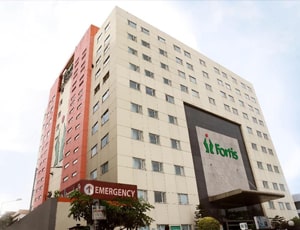
Types of Prostatectomy in Fortis Hospital and its associated cost
| Treatment Option | Approximate Cost Range (USD) | Approximate Cost Range (INR) |
|---|---|---|
| Prostatectomy (Overall) | 3046 - 8151 | 249668 - 666506 |
| Radical Prostatectomy | 3057 - 7120 | 250618 - 585334 |
| Laparoscopic Prostatectomy | 5054 - 8086 | 417599 - 667128 |
| Robotic Prostatectomy | 6067 - 8080 | 497598 - 668935 |
| Open Prostatectomy | 4078 - 7138 | 334140 - 581541 |
DOCTORS IN 12 SPECIALITIES
FACILITIES & AMENITIES

Types of Prostatectomy in Sarvodaya Hospital and Research Centre and its associated cost
| Treatment Option | Approximate Cost Range (USD) | Approximate Cost Range (INR) |
|---|---|---|
| Prostatectomy (Overall) | 3044 - 8082 | 249588 - 665884 |
| Radical Prostatectomy | 3056 - 7115 | 248991 - 579818 |
| Laparoscopic Prostatectomy | 5095 - 8106 | 415785 - 666006 |
| Robotic Prostatectomy | 6065 - 8129 | 501215 - 663802 |
| Open Prostatectomy | 4057 - 7105 | 331300 - 582121 |
DOCTORS IN 14 SPECIALITIES
FACILITIES & AMENITIES
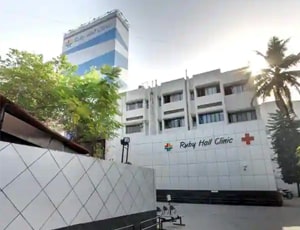
Types of Prostatectomy in Ruby Hall Clinic and its associated cost
| Treatment Option | Approximate Cost Range (USD) | Approximate Cost Range (INR) |
|---|---|---|
| Prostatectomy (Overall) | 2777 - 7566 | 230630 - 605142 |
| Radical Prostatectomy | 2769 - 6449 | 232353 - 530873 |
| Laparoscopic Prostatectomy | 4689 - 7594 | 377310 - 612703 |
| Robotic Prostatectomy | 5612 - 7455 | 457600 - 608554 |
| Open Prostatectomy | 3709 - 6649 | 305177 - 536032 |
DOCTORS IN 13 SPECIALITIES
FACILITIES & AMENITIES
The prostate gland is present below the urinary bladder in men. It surrounds the urethra and produces fluid that helps in the movement of the semen. Prostatectomy is a surgery that involves total or partial removal of the prostate gland. It is commonly performed as a part of treatment for prostate cancer.
Radical prostatectomy: This surgery involves the removal of the entire prostate gland along with the surrounding lymph nodes. The surgical techniques used to conduct radical prostatectomy include the following:
Open simple prostatectomy: This surgical procedure involves removal of just the affected part of the prostate gland and is recommended for men with the cancerous prostate gland or benign prostatic hyperplasia (BPH).
Indications
Usually, general anaesthetic is given before the start of the procedure to make you unconscious. A spinal anaesthesia or an epidural anaesthesia will also be given, which causes numbness in the lower part of the body. Heart rate, blood pressure, and blood oxygen levels will be continuously monitored.
In retropubic surgery, the incision is made from the belly button to the pubic bone. In laparoscopic surgery, many small incisions are made through which a narrow tube (laparoscope) with a camera is inserted. The surgeon will see the internal structures on the monitor while performing the surgery. Robotic surgery is conducted in a few hospitals, where the surgical tools for the operation are used with the help of a robotic system. In perineal surgery, the incision is made in between the anus and the scrotum.
After making an incision, the prostate gland is removed and the incision is sutured. While removing the prostate gland, minor damage to the nerves is possible. The fluid is drained using a Jackson-Pratt drain. A catheter is inserted to drain the urine from the bladder.
The prostate-specific antigen (PSA) levels after radical prostatectomy are usually 0 after a month of the surgery. However, the PSA levels could be low in some patients even after the surgery. This is because some normal tissue is left behind even after the surgery.
Ask your healthcare adviser for the best multiple options and choose the one that meets your expectations
While depending upon a range of factors, the minimum cost for Prostatectomy in the United Arab Emirates is USD 14000. Only some of the best and certified hospitals in the United Arab Emirates perform Prostatectomy for international patients.
Prostatectomy cost in the United Arab Emirates varies from one hospital to the other. Some of the best hospitals for Prostatectomy offer a comprehensive package that covers the end-to-end expenses related to investigations and treatment of the patient. The Prostatectomy procedure in the United Arab Emirates includes the fees of the surgeon, hospitalization and anesthesia as well. There are many things that may increase the cost of Prostatectomy in the United Arab Emirates, including prolonged hospital stay and complications after the procedure.
There are many hospitals that perform Prostatectomy in the United Arab Emirates. The following are some of the most renowned hospitals for Prostatectomy in the United Arab Emirates:
While the speed of recovery may vary from patient to patient, they are still required to stay for about 21 days after discharge. This is important to ensure that the surgery was successful. During this time, control and follow-up tests take place to check for medical fitness.
There are certain additional cost that the patient has to pay apart from the Prostatectomy cost. The per day extra expenses in the United Arab Emirates per person are about USD 50 per person.
The following are some of the best cities for Prostatectomy in the United Arab Emirates:
It is possible for patients to opt for video telemedicine consultation before they come for Prostatectomy in the United Arab Emirates. Some of the surgeons offering this service include the following
| Doctor | Cost | Schedule Your Appointment |
|---|---|---|
| Dr. Gilbert Ayoub | USD 173 | Schedule Now |
| Dr. Mohanad Diab | USD 173 | Schedule Now |
| Dr. Balaji Balasubramaniam | USD 173 | Schedule Now |
| Dr. Ali Al Ghrebawi | USD 173 | Schedule Now |
The patient has to spend about 4 days in the hospital after Prostatectomy for proper recovery and to get clearance for discharge. During the recovery, the patient is carefully monitored and control tests are performed to see that everything is okay. If required, physiotherapy sessions are also planned during recovery in hospital.
The average rating for Prostatectomy hospitals in the United Arab Emirates is 4.5. This rating is automatically calculated on the basis of several parameters such as the infrastructure of the hospital, quality of services, nursing support and other services.
There are more than 8 hospitals that offer Prostatectomy in the United Arab Emirates. These hospitals have propoer infrastructure as well as offer good quality of services when it comes to Prostatectomy Apart from good services, the hospitals are known to follow all standard and legal guidelines as dictated by the local medical affairs body or organization.
Some of the renowned doctors for Prostatectomy in the United Arab Emirates are: